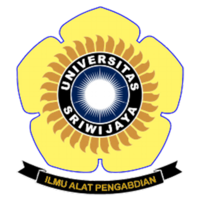Respon Pertumbuhan Lima Varietas Jagung pada Aplikasi Paket Pemupukan di Lahan Suboptimal Lombok Utara
Abstract
Astiko W, Rohyadi A, Windarningsih M, Muthahanas I. 2020. Growth response five maize varieties on fertilization package applications in suboptimal lands North Lombok. In: Herlinda S et al. (Eds.), Prosiding Seminar Nasional Lahan Suboptimal ke-8 Tahun 2020, Palembang 20 Oktober 2020. pp. xx. Palembang: Penerbit & Percetakan Universitas Sriwijaya (UNSRI).
Nowadays the expansion of agricultural areas is starting to spread to suboptimal land, with the main problems that stand out are poor water, nutrients and organic matter. This situation causes improvement in plant growth to become a major problem in suboptimal land. Therefore, a sustainable suboptimal land agricultural practice is needed through the application of organic, inorganic, and mycorrhizal bio-fertilizers. This study aims to determine the growth response of five varieties of maize treated with organic fertilization packages (15 tons/ha of cow fertilizer), inorganic (Urea 300 kg/ha and Phonska 200 kg/ha) and mycorrhizal biofertilizers (1.5 tons/ha) in suboptimal land of North Lombok. The research was conducted in the Village of West Pemenang, Pemenang District, North Lombok Regency. A field experimental was designed with Randomized Block Design with three replications and five treatments of maize varieties, namely V1 (P8IS variety), V2 (P8DPP variety), V3 (Gumarang variety), V4 (Lemuru variety), and V5 (Sukmaraga variety). Parameters observed were plant height and number of leaves at 14, 28, and 42 days after seeding (das), wet and dry weight of roots and shoot at 42 das, number of mycorrhizal spores and percentage of root colonization at 42 das. Observation data were analyzed using analysis of variance (ANOVA) and Tukey's HSD (Honestly Significant Difference) means-tested at a 5% level of significance. The results showed that the Sukmaraga (V5) variety showed the best growth response in the application of organic, inorganic and mycorrhizal biofertilizers in suboptimal land of North Lombok.
Nowadays the expansion of agricultural areas is starting to spread to suboptimal land, with the main problems that stand out are poor water, nutrients and organic matter. This situation causes improvement in plant growth to become a major problem in suboptimal land. Therefore, a sustainable suboptimal land agricultural practice is needed through the application of organic, inorganic, and mycorrhizal bio-fertilizers. This study aims to determine the growth response of five varieties of maize treated with organic fertilization packages (15 tons/ha of cow fertilizer), inorganic (Urea 300 kg/ha and Phonska 200 kg/ha) and mycorrhizal biofertilizers (1.5 tons/ha) in suboptimal land of North Lombok. The research was conducted in the Village of West Pemenang, Pemenang District, North Lombok Regency. A field experimental was designed with Randomized Block Design with three replications and five treatments of maize varieties, namely V1 (P8IS variety), V2 (P8DPP variety), V3 (Gumarang variety), V4 (Lemuru variety), and V5 (Sukmaraga variety). Parameters observed were plant height and number of leaves at 14, 28, and 42 days after seeding (das), wet and dry weight of roots and shoot at 42 das, number of mycorrhizal spores and percentage of root colonization at 42 das. Observation data were analyzed using analysis of variance (ANOVA) and Tukey's HSD (Honestly Significant Difference) means-tested at a 5% level of significance. The results showed that the Sukmaraga (V5) variety showed the best growth response in the application of organic, inorganic and mycorrhizal biofertilizers in suboptimal land of North Lombok.
Keywords
fertilization package, maize, mycorrhizal, suboptimal
Full Text:
PDFArticle Metrics
Abstract view : 166 timesPDF - 159 times
Refbacks
- There are currently no refbacks.

